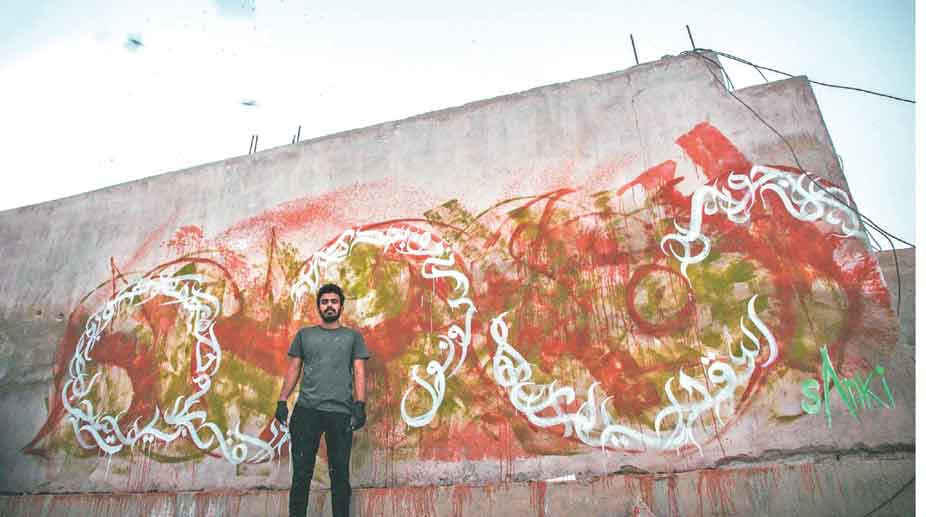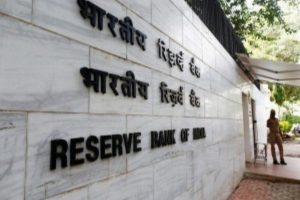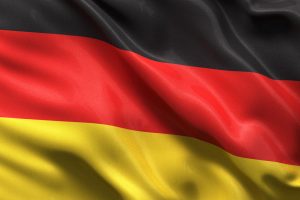There is a wall mural in the compound of a rundown textile mill located in the Hindu-majority Mahalaxmi area of Mumbai that carries a haunting verse penned down by Urdu poet Muqtida Hasan Nida Fazli in the aftermath of Partition: “Hindu bhi sukoon se hai Musalmaan bhi sukoon se, Insaan pareshaan yahaan bhi hai wahaan bhi” (Hindus are at peace, Muslims are too, it’s the humans who are worried here [India] and there [Pakistan] too).
While it is rare to come across such reminders of coexistence on the streets of India and Pakistan, it is even less common to chance upon the Urdu nastaliq script in the Hindu-dominated areas of India. Recently, however, artists Zeenat Kulavoor in Mumbai and Sanki King in Karachi, intent on bringing the language to the fore, initiated the project Pehle Aap to convey messages close to their hearts using the art form of murals, and in the process, draw their communities together.
Advertisement
Using their distinct forms and perspectives, the two artists began a conversation in Urdu through murals on four walls – two each in Mumbai and Karachi. “You get to see the Urdu script in India only in Muslim-clustered areas and, that too, as part of signage holders for stores or outside a masjid. With the location of my wall, I wanted to break this Muslim-centric aspect and use Urdu in a neutral and artistic manner in a space where the younger minds can relate to the message and appreciate it,” Kulavoor told Dawn.
Advertisement
To begin the conversation, Kulavoor painted Pehle Aap in her first mural in the compound of Shakti mills. She began the conversation with the phrase which translates to “after you”, as a sign of respect towards popular street artist Abdullah, commonly referred to as Sanki King. Sanki, a close follower of Pakistani poet Jaun Elia’s work, responded to Kulavoor’s mural with a series titled Inqilaab, which has been inspired by a poem by Elia.
“Both of my walls are painted in North Nazimabad in Karachi, where I live. One of my murals reads: “Pak o Hindustan ke funkaro; Aqal o deewangi ke dildaro; Bin tumhare hai shauq ke rumna; Tum se hai aab e Jhelum o Jamna” (O artisans of Pakistan and India, the ones enamoured by wisdom and insanity, zest amp and zeal go astray without you, the flow of Jhelum and Jamuna is there because of you),” Sanki King said, adding that he had already planned two other murals in a different area to keep the conversation going.
Given Urdu’s dying popularity and influence in India and other parts of the world, and the cultural disconnect among the youth, what inspired the two artists to begin this conversation?
Recently, Sanket Avlani – the curator of the project – got the chance to tag along with a friend to meet artists who specialised in Urdu calligraphy in ‘purani Dilli’ (old Delhi). The katibs (calligraphers) not only gave them a glimpse into their writing styles but also shared the reason why Urdu script was fading out in the region.
“They believe the language has suffered because it is often linked to a particular people, religion or agenda. And that’s what needs to be changed,” Avlani told Dawn, emphasising the language’s role as a vehicle of peace.
In order to explore the origins and history of the nastaliq script, and to re-introduce it to aspiring artistes, Avlani and his team at Design Fabric – a Mumbai-based arts and design publication – produced the “Urdu Issue”, an audio-visual exhibition involving photography, the work of calligraphers, poetry recitals, short films, and murals – inspired by Urdu.
“Among the various projects introduced under the “Urdu Issue”, the collaborative aspect of Pehle Aap stood out the most. We [the team and Sanki] got to know each other through Skype calls and Facebook, and never expected the output to be this meaningful,” said Madhuvanthi Mohan, community manager and creative producer at Design Fabric. The organisers have announced an open call to other artists based in India and Pakistan to join in and continue the mural conversation in their respective cities in order to keep alive the universality of language.
Dawn/ANN
Advertisement











